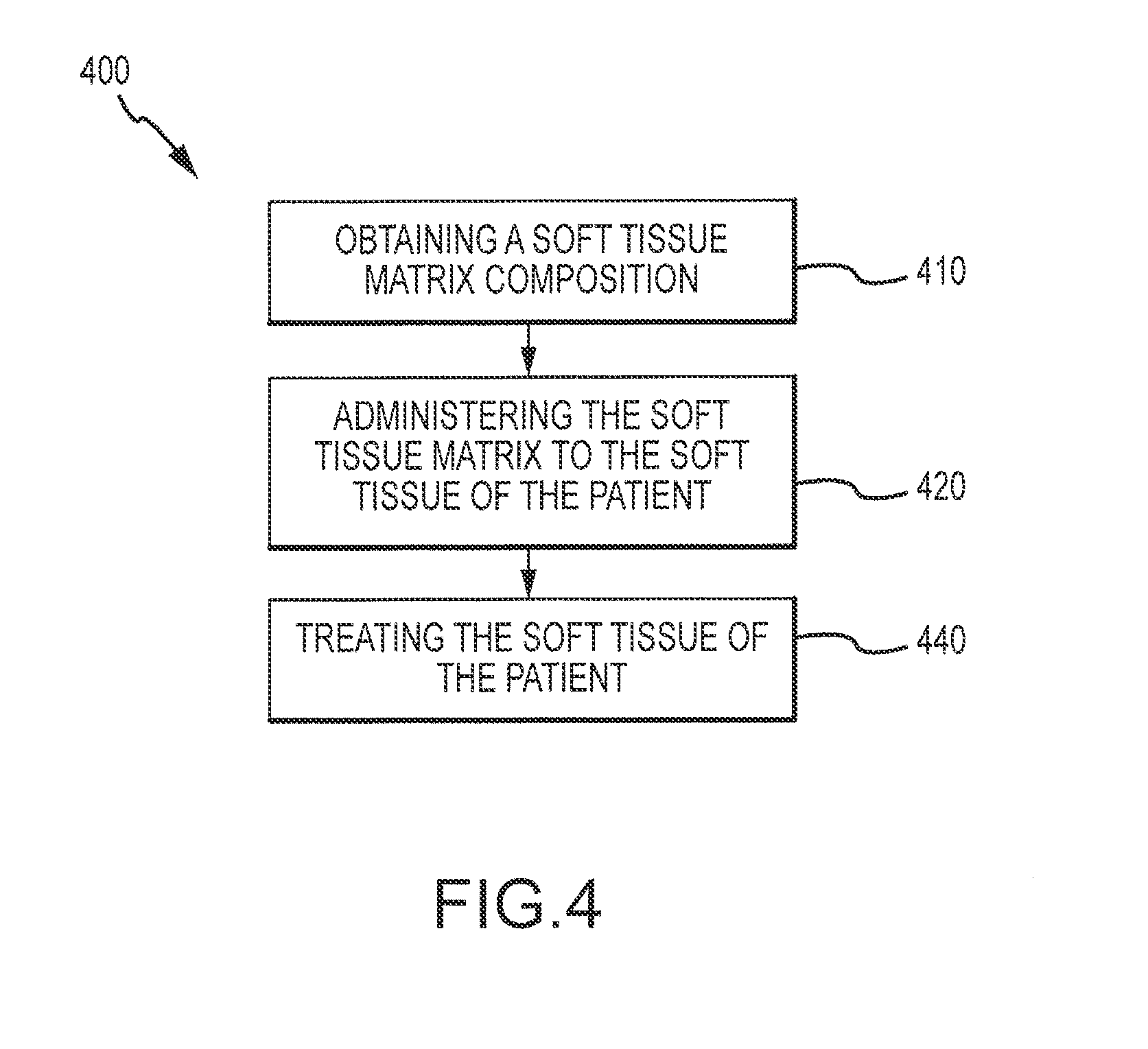Flowable Matrix Compositions and Methods
a matrix composition and flowable technology, applied in the field of wound treatment, can solve the problems of reducing the fraction of soft tissue material stiff and friable, partially disrupting the macroarchitecture of extracellular matrix tissue within soft tissue material, and further disrupting the macroarchitecture of extracellular matrix tissue within
- Summary
- Abstract
- Description
- Claims
- Application Information
AI Technical Summary
Benefits of technology
Problems solved by technology
Method used
Image
Examples
experimental example 1
[0051]A single piece of decellularized human dermal tissue, prior to undergoing a sterilization process, was stored in liquid Nitrogen for a period of time to render the tissue friable. The frozen tissue was milled. The resulting matrix composition, which had the consistency of a putty or paste, was placed into a 5 cc syringe by means of a spatula. The plunger on the syringe was depressed upon the paste to minimize air pockets within the matrix composition. The loaded syringe was placed in a plastic inner tub and heat-sealed with a first Tyvek® cover. This assembly was placed in a larger outer tub, and heat-sealed with a second Tyvek® cover. The entire resulting syringe and package assembly was submitted to approximately 22 kGy electron beam radiation for sterility assurance. Upon subsequent evaluation of the soft tissue matrix composition, it was observed that the matrix composition provided excellent handling and ease of use characteristics.
experimental example 2
[0052]Six pieces of decellularized (donor derived full-thickness dermal tissue) were obtained (4 cm×8 cm in size). The pieces were each cut into long strips with a knife, and then frozen in liquid nitrogen. The frozen strips were processed in a 200 ml Waring blender. At the onset of blending, loud cracking emanated from the blender. Blending was continued until the loud cracking sounds ceased. 10 g of blended tissue was combined with 1.5 g of 0.9% saline, and the combination was mixed with a spatula, so as to form a matrix composition. The mixed matrix composition was loaded into an irrigation syringe having needle with a 3 mm bore. Upon depression of the syringe plunger, the matrix composition was observed to flow easily through the 3 mm bore needle. Upon additional testing, it was observed that the matrix composition flowed easily through needles having bore sizes of 3 mm and 1.5 mm. However, the matrix composition was not observed to flow easily through an 18 gauge needle. Five s...
experimental example 3
[0053]Flow characteristics of skin, tendon, and decellularized dermal matrix materials were evaluated. Samples of each type were prepared, and loaded onto a syringe. The produce was delivered to a luer-loc tipped syringe onto which a luer lock needle could be attached securely. Each sample was loaded along with an amount of 0.9% saline. Each of the three samples were extrudable through a 16 gauge needle, but not a 23 gauge needle. A 1 cc sample of each material was diluted and dissolved in 9 cc of 0.9% saline, respectively. Each of the resulting 10 cc compositions were extrudable through an 18 gauge needle (1.27 mm; 0.050 inches), but not a 23 gauge needle (0.4636 mm; 0.01825 inches). Each of the three sample types were subject to 25-35 kGy E-beam sterilization, and after sterilization the extrudability of the contents in the syringe were compared to a sample that had not been e-beam sterilized. All three sterilized samples showed no difference in the ease of extrusion from the syri...
PUM
 Login to View More
Login to View More Abstract
Description
Claims
Application Information
 Login to View More
Login to View More - R&D
- Intellectual Property
- Life Sciences
- Materials
- Tech Scout
- Unparalleled Data Quality
- Higher Quality Content
- 60% Fewer Hallucinations
Browse by: Latest US Patents, China's latest patents, Technical Efficacy Thesaurus, Application Domain, Technology Topic, Popular Technical Reports.
© 2025 PatSnap. All rights reserved.Legal|Privacy policy|Modern Slavery Act Transparency Statement|Sitemap|About US| Contact US: help@patsnap.com



